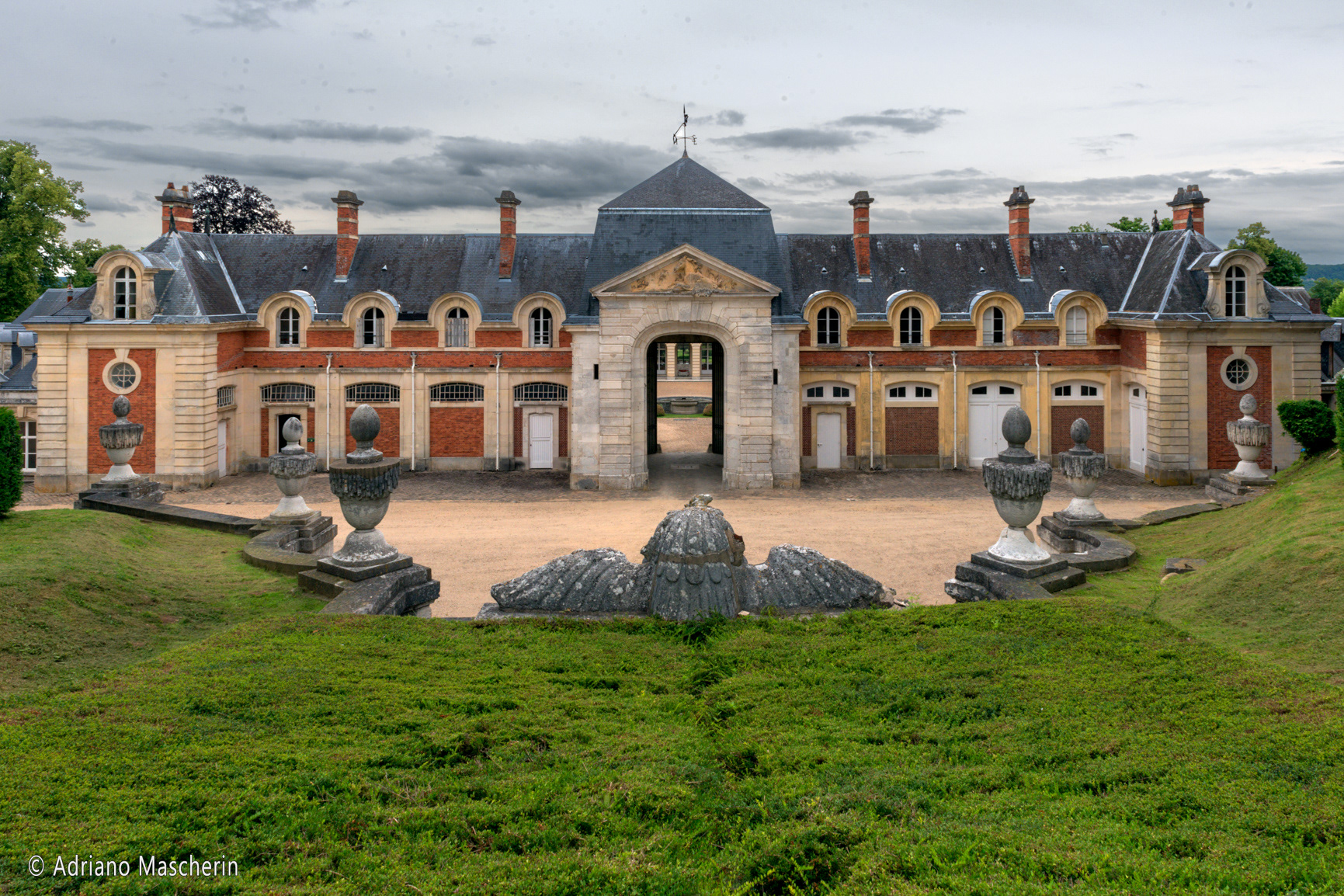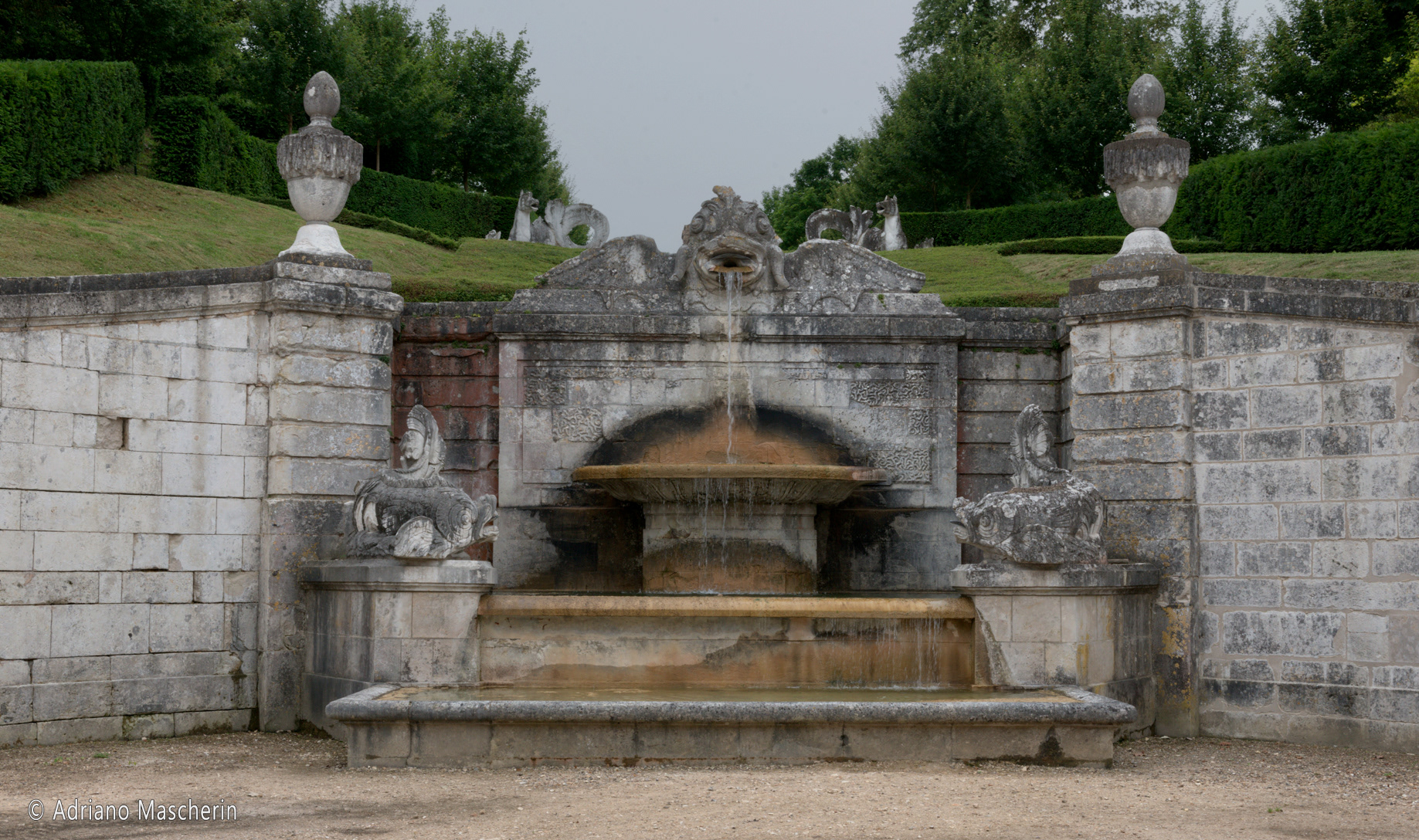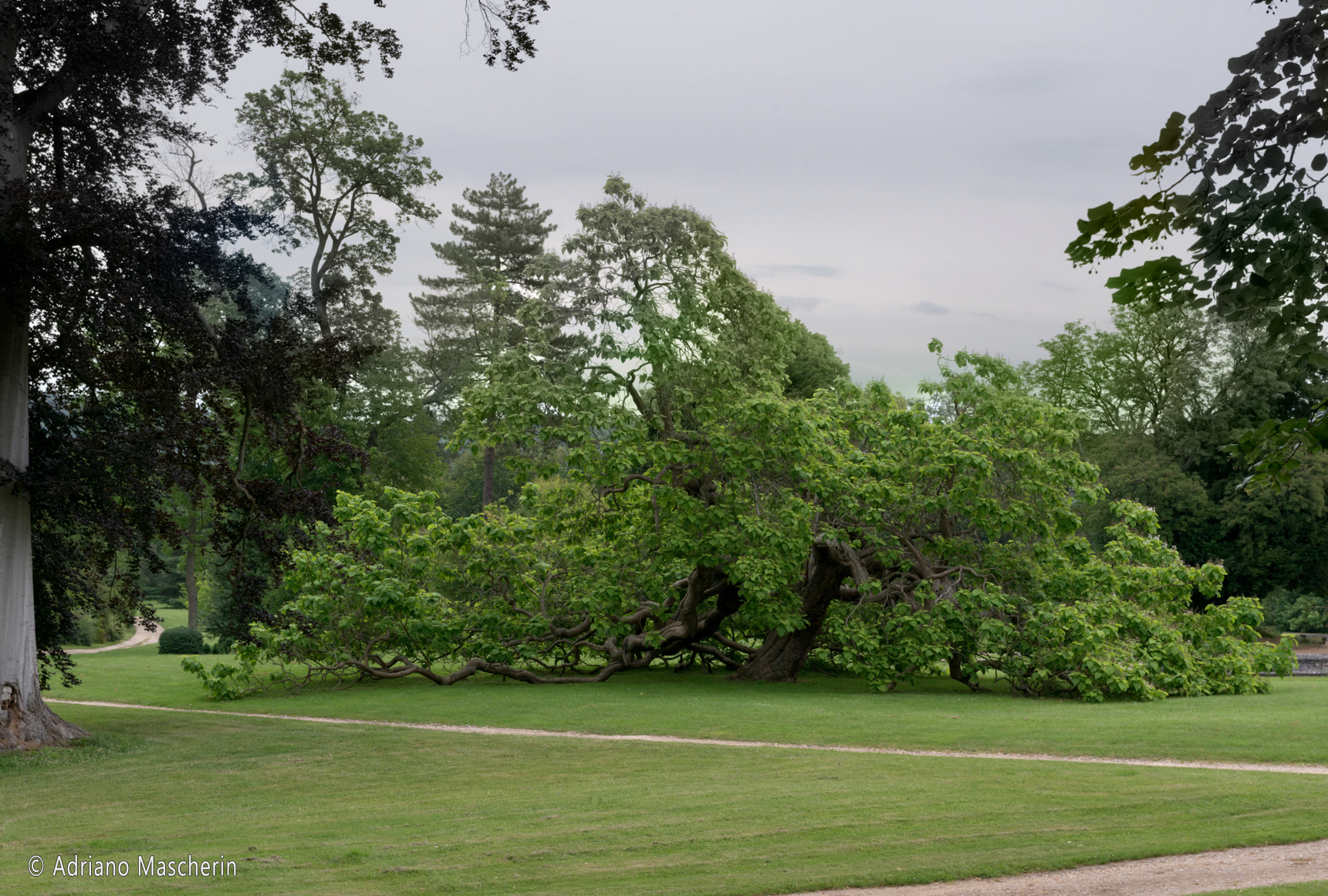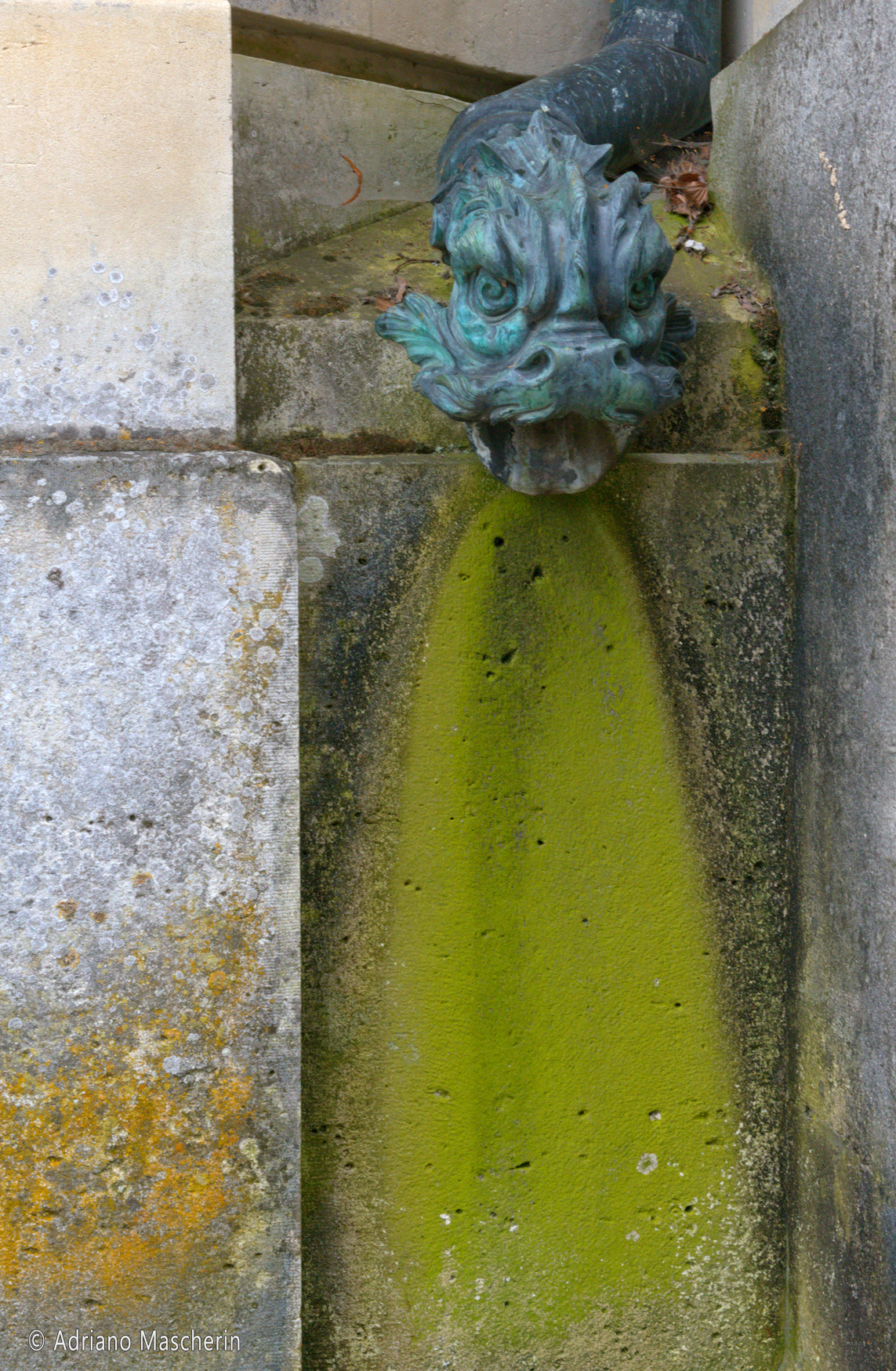Abbiamo potuto visitare il castello di Bizy solo all’esterno. Questa è la storia :
Dal 14° secolo, la famiglia Jubert possedeva le terre di Bizy. Nel 1675 Nicolas Jubert de Bouville, Consigliere di Stato e Intendente di Orléans, elevò la Signoria di Bizy al rango di Marchesato. Fece costruire un castello. Nel 1721 il duca di Belle-Isle acquistò il marchesato di Bizy. Era il nipote del sovrintendente alle finanze di Luigi XIV, Nicolas Fouquet. Mantenne il castello di Jubert de Bouville e si concentrò sul parco. Intraprese l'ampliamento della tenuta, fece costruire una rete idraulica per rifornire d'acqua il castello e abbellì i giardini con fontane e giochi d'acqua.
Chiamò l'architetto Contant d'Ivry, considerato il 'miglior architetto d'Europa' che, tra l'altro, progettò lo scalone principale del Palais-Royal per costruire edifici che costituissero un aia. Oggi restano le magnifiche scuderie. Furono costruiti ad immagine di quelli di Versailles.
Chiamò l'architetto Contant d'Ivry, considerato il 'miglior architetto d'Europa' che, tra l'altro, progettò lo scalone principale del Palais-Royal per costruire edifici che costituissero un aia. Oggi restano le magnifiche scuderie. Furono costruiti ad immagine di quelli di Versailles.
Nel 1749, il duca di Belle-Isle, che divenne maresciallo nel 1741, ricevette Luigi XV e Madame de Pompadour. Non avendo discendenti, lasciò in eredità il castello al re Luigi XV nel 1759.
Il re scambiò poi Bizy con il principato di Dombes (in Ain) al conte d'Eu che lo lasciò in eredità alla sua morte a suo cugino, Louis de Bourbon, duca di Penthièvre, legittimo nipote di Luigi XIV e di Madame de Montespan.
Il re scambiò poi Bizy con il principato di Dombes (in Ain) al conte d'Eu che lo lasciò in eredità alla sua morte a suo cugino, Louis de Bourbon, duca di Penthièvre, legittimo nipote di Luigi XIV e di Madame de Montespan.
Il duca di Penthièvre ha la più grande fortuna d'Europa, ma ha speso la maggior parte delle sue entrate per fare del bene e ha voluto prendersi cura personalmente degli indigenti. Durante la Rivoluzione, il duca di Penthièvre continuò ad essere acclamato: 'Perché il popolo dovrebbe augurarmi del male? Ho sempre pensato che l'alto rango analogo alla mia nascita mi dedicasse a sacrificarmi ad essa. Nel 1792 si stabilì definitivamente a Bizy con la figlia Louise Marie-Adélaïde che, grazie al matrimonio con 'Philippe-Égalité', divenne duchessa d'Orléans. Il duca di Penthièvre morì nel 1793.
Nel diario di Perlet del 7 marzo 1793 si leggeva: 'Il cittadino Penthièvre è morto... era il patrimonio dei poveri depositato dalla Fortuna nelle mani della Virtù...'
Nel diario di Perlet del 7 marzo 1793 si leggeva: 'Il cittadino Penthièvre è morto... era il patrimonio dei poveri depositato dalla Fortuna nelle mani della Virtù...'
La proprietà della famiglia Orléans fu confiscata e il castello di Bizy fu dichiarato proprietà nazionale e abbandonato. I commercianti di proprietà smantelleranno il castello di Jubert de Bouville e lo venderanno pietra dopo pietra. Nel 1805 fu acquistato dal generale Le Suire che doveva costruire una casa più modesta basata sull'ex aia del duca di Belle-Isle, gli unici edifici risparmiati dalla Rivoluzione. Vale a dire nella posizione dell'attuale edificio principale.
Sotto la Restaurazione, la duchessa d'Orléans acquistò la sua proprietà, compreso il castello di Bizy.
Suo figlio Louis-Philippe, re dei francesi, vi soggiornerà spesso e vi farà delle modifiche: riqualifica la casa di Le Suire, fa costruire le gallerie vetrate per chiudere completamente il cortile e fa allestire il parco all'inglese.
Suo figlio Louis-Philippe, re dei francesi, vi soggiornerà spesso e vi farà delle modifiche: riqualifica la casa di Le Suire, fa costruire le gallerie vetrate per chiudere completamente il cortile e fa allestire il parco all'inglese.
Nel 1858, il barone Schikler acquistò Bizy. Conserva parte delle trasformazioni di Luigi Filippo, comprese le gallerie del cortile principale e costruì, con l'aiuto dell'architetto William Henry White, la parte centrale, un sontuoso edificio in stile neoclassico, oggi conservato. Nel 1909, il barone lasciò in eredità Bizy a suo nipote, Louis Suchet, quarto duca di Albufera, discendente di Suchet, maresciallo dell'Impero e primo duca di Albufera. Madame Vergé, nata Isabelle Suchet d'Abuféra, è ancora oggi la proprietaria del castello
We could only visit Bizy Castle from the outside. This is the history :
From the 14th century, the Jubert family owned the lands of Bizy. In 1675 Nicolas Jubert de Bouville, Councilor of State and Intendant of Orléans, elevated the Lordship of Bizy to the rank of Marquisate. He had a castle built. In 1721 the Duke of Belle-Isle bought the marquisate of Bizy. He was the grandson of Louis XIV's superintendent of finance, Nicolas Fouquet. He kept the castle of Jubert de Bouville and concentrated on the park. He undertook the expansion of the estate, had a hydraulic network built to supply the castle with water and embellished the gardens with fountains and water features.
He called the architect Contant d'Ivry, considered the 'best architect in Europe' who, among other things, designed the main staircase of the Palais-Royal to build buildings that would constitute a threshing floor. Today the magnificent stables remain. They were built in the image of those of Versailles.
In 1749, the Duke of Belle-Isle, who became a marshal in 1741, received Louis XV and Madame de Pompadour. Having no descendants, he bequeathed the castle to King Louis XV in 1759.
The king then exchanged Bizy with the principality of Dombes (in Ain) to the Count d'Eu who left it as an inheritance on his death to his cousin, Louis de Bourbon, Duke of Penthièvre, legitimate nephew of Louis XIV and Madame de Montespan .
The Duke of Penthièvre has the largest fortune in Europe, but he spent most of his income on doing good and wanted to personally take care of the poor. During the Revolution, the Duke of Penthièvre continued to be acclaimed: 'Why should the people wish me harm? I have always thought that the high rank analogous to my birth dedicated me to sacrifice myself to it. In 1792 he settled permanently in Bizy with his daughter Louise Marie-Adélaïde who, thanks to her marriage to 'Philippe-Égalité', became Duchess of Orleans. The Duke of Penthièvre died in 1793.
In Perlet's diary of March 7, 1793 we read: 'The citizen Penthièvre is dead ... it was the patrimony of the poor deposited by Fortune in the hands of Virtue ...'
The Orléans family property was confiscated and Bizy Castle was declared national property and abandoned. Property dealers will dismantle the castle of Jubert de Bouville and sell it stone by stone. In 1805 it was bought by General Le Suire who was to build a more modest house based on the former farmyard of the Duke of Belle-Isle, the only buildings spared by the Revolution. Namely in the location of the current main building.
Under the Restoration, the Duchess d'Orléans bought her property, including the castle of Bizy.
Her son Louis-Philippe, king of the French, will often stay there and make changes: he redeveloped the house in Le Suire, had the glazed galleries built to completely close the courtyard and set up the English park.
In 1858, Baron Schikler bought Bizy. He retains part of Louis Philippe's transformations, including the galleries of the main courtyard and built, with the help of architect William Henry White, the central part, a sumptuous neoclassical building, which is preserved today. In 1909, the baron bequeathed Bizy to his nephew, Louis Suchet, fourth duke of Albufera, descendant of Suchet, marshal of the Empire and first duke of Albufera. Madame Vergé, born Isabelle Suchet d'Abuféra, is still the owner of the castle today

Les Andelys - Chateau Gaillard

Vernon - Chateau de Bizy - Fontana - Fountain

Vernon - Chateau de Bizy

Vernon - Chateau de Bizy - Fontana - Fountain

Vernon - Chateau de Bizy

Vernon - Chateau de Bizy - Fontana - Fountain

Vernon - Chateau de Bizy - Catalpa gigante -Giant catalpa

Vernon - Chateau de Bizy - Scuderie - Stable

Vernon - Chateau de Bizy

